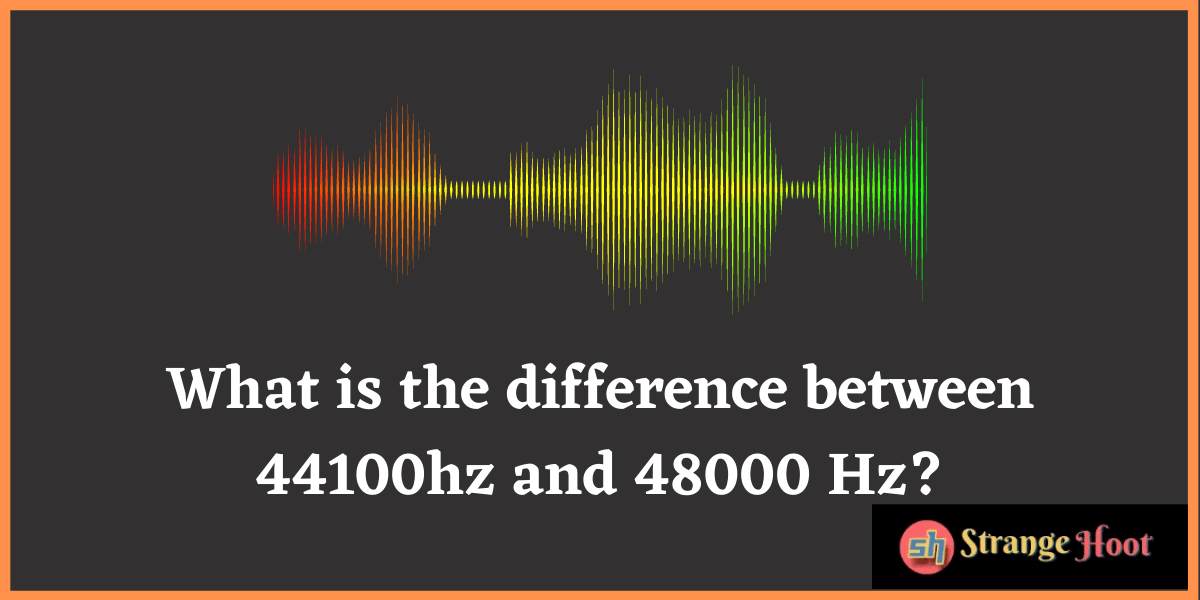44100Hz and 48000Hz are both measures of sample rates of audio.
In simple terms, a sample rate measures how many times the audio is recorded per second.

- Every audio recording will have an upper limit and a lower limit in terms of frequency.
- All the audio recordings fall in the human-perceivable sound levels – 20Hz to 20kHz.
- According to the sound recording best principles, the sample rate is so maintained that it is at least twice the higher frequency limit of the audio.
- Also, the higher the sample rate, the better the quality of the audio and so is the size of the audio.
48000hz Sound in Gaming
4.8kHZ is also termed 16-bit. 48000hz or 4.8kHZ is the most preferred sample rate for filmmaking. The reason being it gives enough space to accommodate frequencies that are at the higher end of the sound spectrum.
It suits two-channel or stereo recording and video making that will be released on televisions. 4.8kHz is a nice round number and makes it easier for syncing and working with.
44100hz Sound in Gaming
On the other hand, 44,100 Hz or 4.4 kHz is the first choice for CD recordings. This sample rate fits personal use and not broadcast purposes. The film, gaming, and video production sounds are mostly recorded above 44.1 kHz. This is because the impact of the Analog-to-Digital converter will be lesser on sound processing.
Besides, 44.1 kHz allows recording of audio waves up to 22.05 kHz, but low pass filters may impact audio below 20kHz. This problem does not arise with 4.8kHz.
48000hz vs 44100hz Sound in Gaming
If we compare these two frequencies, both fall into the higher frequency range that provides ample space for capturing the full human range of sound.
If you are confused if a song encoded at 44100 Hz may be of lower quality than that encoded at 44800hz, provided the bit rate is the same, sound experts say that there is no difference.
The best way to decide which one to use for your music is by trial and testing. 48kHz sounds good for mixing, while for recording, mastering, and distribution, professionals opine that both have the same effect.
Also read:

